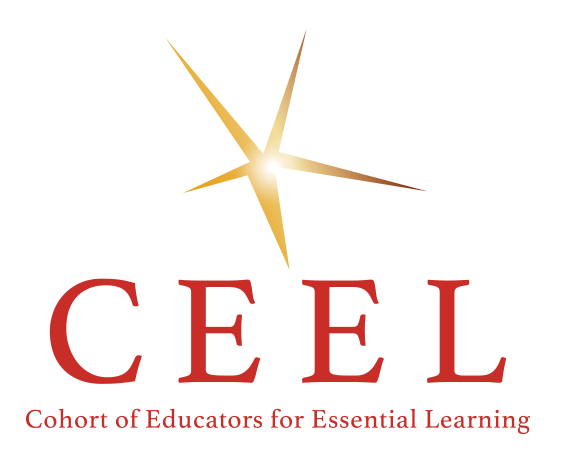I introduced SPIDER Web Discussion to my ninth-grade English students this past week and learned an important lesson about the transparency of goals.
The first thing I do when beginning with SPIDER Web Discussion in a new class is show them a short video of the method in action from a former classroom of mine. It shows a fairly sophisticated, ethical ninth-grade discussion on Romeo and Juliet. In one of my classes this past week, when the video ended, I pointed to the screen and said: “That is the goal.” Most students nodded, but one girl remarked, wide-eyed and droll, “I think I’m actually going to have to read the books this year.” She realized that the students had to be intimately familiar with the text and truly engaged with it to maintain the group discussion well. I find the model of the video very helpful in showing students clear goals early on — before we begin. “This is what we’re aiming for,” I encourage them. But I am quick to add that the video was filmed in April of that school year; it shows nearly a year of progress with SPIDER Web Discussion. The discussion looked nothing like that in September of that year.
In addition to the video model, I hand out the rubric before students begin discussing, and we cover the handful of requirements students must all do if they want a collective A (there is one group grade given for SWD in my class). However, my new school is trying to go paperless and we have very tight budgets and individual tracking for printing and copying. Since we have SMART Boards in our classrooms, a 1:1 device set-up, and Moodle and Google Drive for all document posting and sharing, I have found that I almost never print and copy anything anymore (hooray for the trees!) This past week was the first time I didn’t hand out a hard copy of the rubric and simply left it up on the SMART board throughout the duration of the class discussion. I worried a little that their not having their own copy would prevent them from getting as familiar with the criteria, but I convinced myself that it was better to save the paper.
During the first discussion, one particular group of ninth graders were discussing the short story “The Lottery” by Shirley Jackson. There was a lively and thoughtful exchange of ideas — better than most first days. Several students were responding to a sincere question from the girl who had suggested she might actually have to read the books this year; she asked what the point of the story was, and a few students were wrestling with the idea that the story was about blindly following tradition. Just then, one usually quiet girl looked up at the board and remarked, “One of the things on the rubric says that we should ‘take risks and dig for deep meaning.’ I’m going to take a risk and ask if maybe this whole story is about life and death and is a symbol of that struggle. In the beginning, the story starts innocently and happily, and then it gets darker and more tense, and then it ends suddenly with the woman’s death. Perhaps the story is symbolizing that life cycle — we are born innocent children, then we lose that innocence as we get older, and then we die — we all die.”
The class sat for a few beats in silence and one of her classmates replied, “That was so deep I need a minute.” Everyone laughed, but then students began trading ideas back and forth, sharing portions of the text that supported this new way of looking at it, and growing excited about her interpretation.
I was impressed with the unique interpretation, whether I ultimately agree or not, but I was far more impressed by what seemed to be at work behind it: she had consciously used the rubric up on the board to check herself (and her peers) against a discussion goal, and she had consciously pushed herself to higher-level thinking based on that goal.
Maybe it was a fluke, but perhaps there is something to making the stated goals even that much clearer; I had always assumed that handing out the paper copies would keep students more hooked into the criteria, but the board is something that commands their attention more forcefully — it’s up at the front of the room, lighted up, and larger than life. Maybe physically representing the goals this way was key into their being used more thoughtfully.
I will keep projecting the rubric for the time being and note whether students are audibly referencing the criteria and engaging more actively in self-assessment. I suspect they just might.
How do you share goals or make them explicit? I would love more ideas.


One thought on “How Going Paperless Leads to an A-ha Moment on Goals”
Such a great post, Lex. Not only have you provided a vivid account of a student-led discussion, but you raise a crucial issue as to what, exactly, we mean by ‘clarity of goals’ and how we can best make them more available and transparent.
Co-incidentally, I was in a 2nd grade classroom Monday where the students spent 20 minutes in self-sustained conversation about 4 books by the same author (Lionni). “What’s the same and what’s different in all 4 books?” The kids generated discussion rules with the teacher prompting and charting, and each kid had a slip of paper with a rule to worry about. And they did a fantastic job of sustaining the talk, doing their roles, and staying on task with engagement. All because the goal and rules were clear.